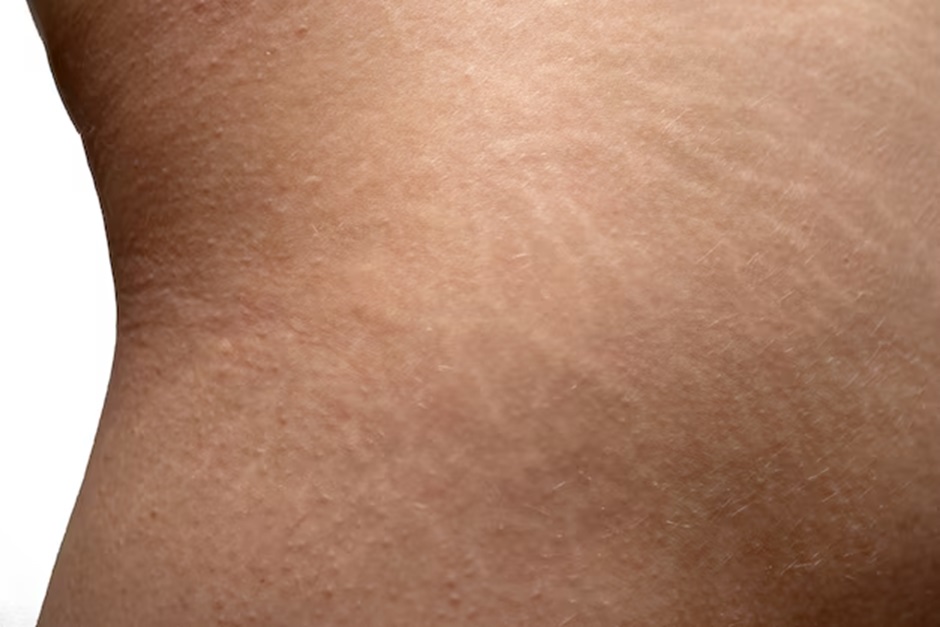
Stretch marks are a common issue that many people, especially women, suffer from. Despite being harmless, stretch marks are something everyone wants to get rid of. Stretch marks are nothing but common cosmetic concerns. Because stretch marks impact self-esteem and body confidence, people seek to eliminate them. In this blog, we will explore laser treatment for stretch mark removal, how it works, how long it takes to show results, how long the results last, and the other benefits of laser treatment for stretch mark removal.
Laser treatment is one of the most effective treatments for stretch mark removal. The therapy has emerged as a popular non-invasive option with minimal downtime and many other benefits. There are many types of lasers for stretch mark removal, such as Q-switched and pulsed lasers. These lasers have intense pulsed light that helps eliminate the appearance of stretch marks and gives the skin a smooth and firm appearance. Before diving into the treatment details, let’s first understand what stretch marks are and their causes.
What Causes Stretch Marks?
Stretch marks appear when the skin endures fast stretching. The most common causes include pregnancy, rapid weight loss, and weight gain. During pregnancy, the skin stretches quickly, leading to stretch marks on the abdomen, breasts, and thighs. Sudden weight changes can cause the skin to lose its elasticity, resulting in stretch marks. Puberty, with its associated hormonal changes, can also cause stretch marks, especially on the thighs and breasts. While there are many treatments for stretch marks, such as creams, microneedling, microdermabrasion, and chemical peels, laser treatment is often the preferred choice because it effectively reduces the appearance of stretch marks and delivers noticeable results.
How Does Laser Treatment Work?
Laser treatment is a straightforward process. It uses targeted laser technology to improve the appearance of stretch marks by stimulating the body’s natural healing process. This promotes the regeneration of collagen and elastin, which helps make the skin smoother and firmer. However, the effectiveness of the treatment also depends on various factors such as age, the cause of the stretch marks, and individual skin type.
The type of laser used depends on the characteristics of your stretch marks and skin type. There are various types of lasers, including fractional lasers, pulsed dye lasers, and Q-switched lasers. These lasers are also used in tattoo removal and address deeper layers of the skin, making them effective for treating older and white stretch marks.
The mechanism of stretch mark treatment with intense pulsed light (IPL) is relatively simple. The light is absorbed by the skin’s pigments and the blood vessels within the stretch marks, helping to break down discolored skin tissue and stimulate the production of new, healthier skin cells. The healing process is quick and usually requires minimal downtime.
Stretch Mark Removal: The Procedure
Laser treatment for stretch mark removal is quite simple. It starts with a consultation where the doctor will analyze your situation and evaluate your stretch marks to determine the appropriate type of laser treatment. You will then be prepared for the procedure, which may involve avoiding sun exposure and certain skincare products. During the treatment, a topical numbing cream will be applied to minimize discomfort, and a handheld laser device will be used. The procedure typically takes 30 minutes to an hour, during which you may experience a tingling or heating sensation.
The recovery time is usually just a few hours, as laser treatment requires minimal downtime. Depending on your skin type and how it reacts, you may experience mild swelling, redness, or discomfort in the treated area. Following your doctor’s aftercare instructions will help alleviate these symptoms.
Conclusion
Laser therapy is a powerful treatment option for various skin conditions, including tattoo removal and stretch mark removal. Several types of lasers, such as ND, pulsed dye lasers, and Q-switched lasers, can improve the overall appearance of the skin by stimulating collagen and elastin production. While results may vary and multiple sessions may be required, many people find that laser therapy significantly boosts their confidence by helping them achieve smoother, more even skin. Always consult a qualified specialist to determine the best treatment plan based on your needs and goals.
